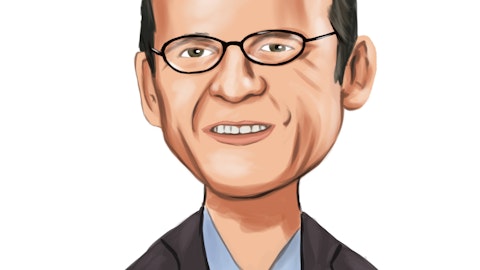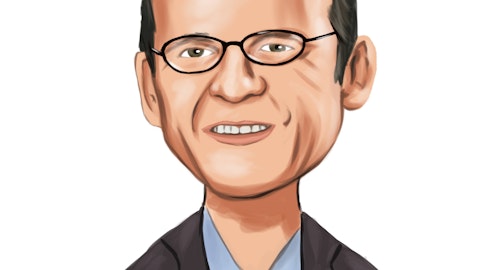Patrick Goris: Yes. On the margins, Julian, we’re comfortable with the margin outlook for HVAC in 2023 of about 15%. Dave mentioned about aftermarket. But I did also mention that price cost is expected to be a tailwind for us of $200 million in the year. That dials in some benefits from what we call deflation. A lot of that sits in the HVAC segment. In addition, I mentioned that we’re focused on delivering another $300 million of productivity in 2023. We did the same in ’22. And of course, given the size of the HVAC segment, a sizable size, of course, is in that segment as well. So we’re comfortable with those 15% margins for the full year.
Julian Mitchell: Great. Thank you.
Operator: Thank you. One moment please for our next question. And our next question coming from the line of Joe Ritchie with Goldman Sachs. Your line is open.
Joe Ritchie: Thanks. Good morning, guys. So can we touch on that price cost neutral comment in 1Q? I guess that’s a little surprising to me, just given that price was probably — there’s probably a good carryover effect occurring from 2022. And then from a cost perspective, I’m just wondering, is there like higher cost inventory that’s coming through? Is it a function of like the merit increases being more front-end loaded? Just any more color you can provide on that price cost neutral in 1Q would be helpful.
Patrick Goris: Yes. The short of it is, and it’s mostly in HVAC is the first quarter of 2022, we were left in at some really attractive pricing from a steel point of view, and the year-over-year impact is actually a net negative for us. As I mentioned to Julian just earlier, we are dialing in a benefit from deflation that kicks in the second quarter of 2023. In Q1, we still have a headwind, particularly in steel that affects HVAC.
Joe Ritchie: Got it. That’s helpful, Patrick. And then I guess I’m just going to stick on margins and just want to understand some of the operational challenges that you guys faced in the fire and security business this quarter. And then also, as I kind of think about the 2023 guidance, it doesn’t seem to imply that much margin growth in the segment. So just maybe just kind of talk us through what some of the issues are and how those are supposed to rectify in 2023?
Patrick Goris: Yes. If I look at the margin performance in Fire & Security, it was up year-over-year in the fourth quarter by 60 basis points. And the way you can think about it is the absence of Chubb is a tailwind to margins. Volume mix and price/cost was a slight headwind to margins. The net was still a margin expansion of 60 basis points. The margins were lower than what we expected. One, supply input costs and higher supply chain costs than what we expected; two, inventories not aligned with where the business is today. And that has some operational impacts, which we experienced in the fourth quarter of the year. And so we have to work through that. And that is what we expect for 2023. And therefore, we expect with minimal volume growth in ’23 to have margin expansion in Fire & Security. The revenue growth we expect in Fire & Security in ’23 is mostly price driven, less volume driven.
Joe Ritchie: Thank you.
Operator: And our next question coming from the line of Jeff Sprague with Vertical Research Partners. Your line is open.
Jeffrey Sprague: Thank you. Good morning everyone. Dave and Patrick, that color you gave on resi, obviously, encompasses what’s going on with field inventories. But maybe you could elaborate a little bit more on how inventories ended versus your expectation? And how you think they kind of normalize over the balance of the year?





